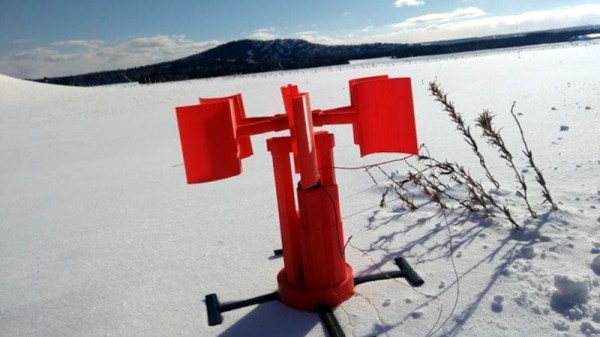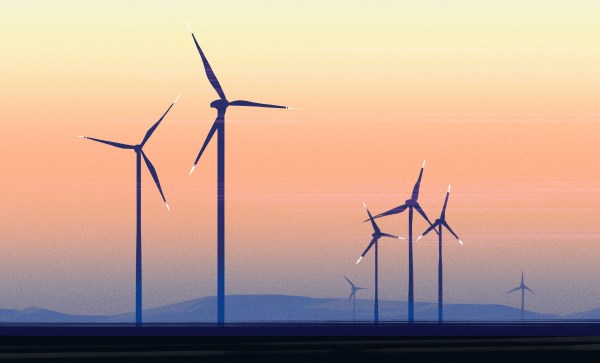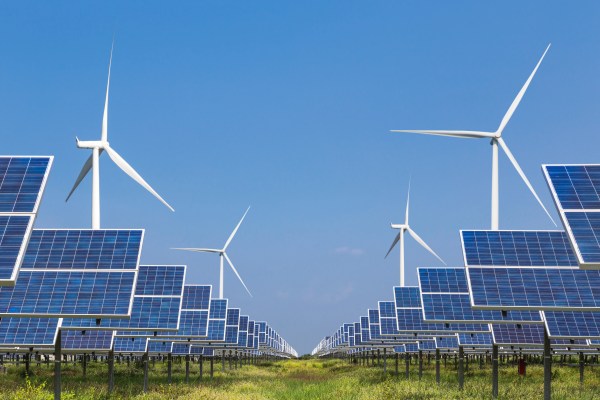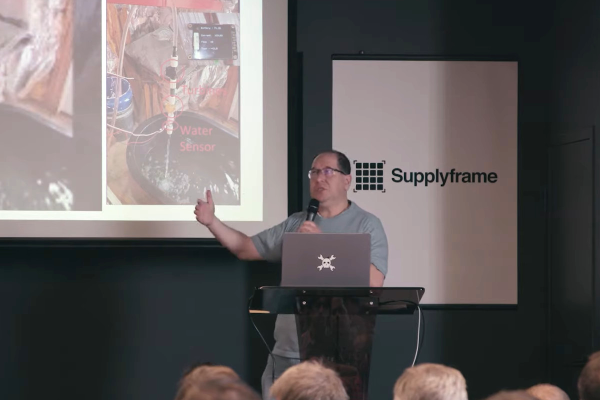Perhaps the most-cited downside of renewable energy is that wind or sunlight might not always be available when the electrical grid demands it. As they say in the industry, it’s not “dispatchable”. A large enough grid can mitigate this somewhat by moving energy long distances or by using various existing storage methods like pumped storage, but for the time being some amount of dispatchable power generation like nuclear, fossil, or hydro power is often needed to backstop the fundamental nature of nature. As prices for wind and solar drop precipitously, though, the economics of finding other grid storage solutions get better. While the current focus is almost exclusively dedicated to batteries, another way of solving these problems may be using renewables to generate hydrogen both as a fuel and as a means of grid storage. Continue reading “Renewable Energy: Beyond Electricity”
wind power23 Articles
Virginia To Get Large-Scale Wind Farm
If you go about 27 miles off the coast of Virginia, you’ll find two windmills jutting up out of the sea. Two windmills aren’t particularly interesting until you realize that these two are on the edge of a 2,100-acre lease that Dominion Energy is placing in Federal water. According to the company, those two will be joined by 176 more windmills on a nearly 113,000-acre adjacent lease. The project has been in the planning and pilot phase for a while, but it was recently given the green light by the US government. You can see a promotional video about the project below. There’s also a video of the first monopiles — the mounts for the windmills — arriving in the area.
The project will eventually have three offshore substations that feed the power to the state military reservation and, from there, to Naval Air Station Oceania, where it feeds the commercial power grid. The final project will power 660,000 homes.
Hackaday Prize 2023: A 3D Printed Vertical Wind Turbine
We feature a lot of off-grid power projects here at Hackaday, whether they’re a micropower harvester or something to power a whole house. Somewhere in the middle lies [esposcar90]’s 3D-printed vertical wind turbine, which it is claimed can deliver 100 watts from its diminutive tabletop package.
It’s designed to be part of a package with another turbine but makes a very acceptable stand-alone generator. The arms have large scoop-like 3D-printed vanes and drive a vertical shaft up the centre of the machine. This drives a set of satellite gears connected to a pair of DC permanent magnet motors, which do the work of generating. For different wind situations, there are even some differing STL gear choices to speed up the motors. The motors are 12V devices, so we’re guessing the output voltage will be in that ballpark. However, it’s not made entirely clear in the write-up.
Continue reading “Hackaday Prize 2023: A 3D Printed Vertical Wind Turbine”
Converting Wind To Electricity Or: The Doubly-Fed Induction Generator
Humanity has been harvesting energy from the wind for centuries. The practice goes back at least to 8th century Persia where the first known historical records of windmills came, but likely extends even further back than that. Compared to the vast history of using wind energy directly to do things like mill grain, pump water, saw wood, or produce fabrics, the production of electricity is still relatively new. Despite that, there are some intriguing ways of using wind to produce electricity. Due to the unpredictable nature of wind from moment to moment, using it to turn a large grid-tied generator is not as straightforward as it might seem. Let’s take a look at four types of wind turbine configurations and how each deal with sudden changes in wind speeds. Continue reading “Converting Wind To Electricity Or: The Doubly-Fed Induction Generator”
New Renewable Energy Projects Are Overwhelming US Grids
It’s been clear for a long time that the world has to move away from fossil energy sources. Decades ago, this seemed impractical, when renewable energy was hugely expensive, and we were yet to see much impact on the ground from climate change. Meanwhile, prices for solar and wind installations have come down immensely, which helps a lot.
However, there’s a new problem. Power grids across the US simply can’t keep up with the rapid pace of new renewable installations. It’s a frustrating issue, but not an insurmountable one.
Continue reading “New Renewable Energy Projects Are Overwhelming US Grids”
Supercon 2022: Irak Mayer Builds Self-Sustainable Outdoor IoT Devices
[Irak Mayer] has been exploring IoT applications for use with remote monitoring of irrigation control systems. As you would expect, the biggest challenges for moving data from the middle of a field to the home or office are with connectivity and power. Obviously, the further away from urbanization you get, the sparser both these aspects become, and the greater the challenge.
[Irak] solves his connectivity problem by assuming there is some WiFi network within range, building a system around the Blues Wireless WiFi note card. Substituting their cellular card would be an option for applications out of WiFi range, but presumably without changing too much on the system and software side of things. Leveraging the Adafruit FeatherWing INA219, which is a bidirectional current sensor with an I2C interface, for both the power generation and system consumption measurements. For control, [Irak] is using an Adafruit ESP32 board, but says little more about the hardware. On the software side, [Irak] is using the Blues Wireless NoteHub for the initial connection, which then routes the collected data onto the Adafruit IoT platform for collation purposes. The final part of the hardware is a LiPo battery which is on standby to soak up any excess power available from the energy harvesting. This is monitored by an LC709203f battery fuel gauge.
Continue reading “Supercon 2022: Irak Mayer Builds Self-Sustainable Outdoor IoT Devices”
Scratch Built Wind Turbine Makes Power And Turns Heads
If you’ve ever aspired to live off the grid, then it’s likely that one of the first things you considered was how to power all of your electrical necessities, and also where to uh… well we’ll stick to the electrical necessities. Depending on your location, you might focus on hydroelectric power, solar power, or even a wind turbine. Or, if you’re [Kris Harbor], all three. In the video below the break, we get to watch [Kris] as he masterfully rebuilds his wind turbine from scratch and reconfigures his charging solution to match.
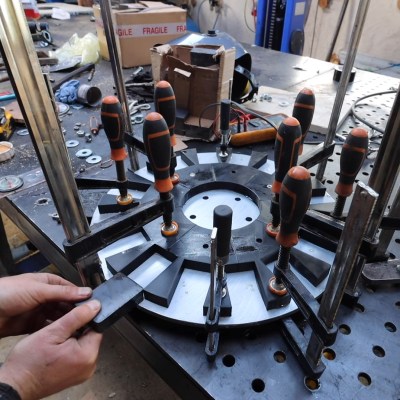
A true hacker at heart, [Kris] has used a everything from 3d printing to broken car parts in order to build his new wind turbine. The three phase generator is constructed from scratch. A hand wound stator is held firmly between two magnetic rotors, where 3d printed jigs hold the magnets in place.
A CNC cut backing plate holds everything together while also supporting the automatically furling vane that keeps the entire turbine from self destructing in inclement weather. A damaged wheel hub from [Kris]’ Land Rover provides the basis for a bearing so that the entire turbine can turn to face the wind, and various machined parts round out the build. The only things we didn’t see in the build were hot glue and zip ties, but we remain hopeful. Continue reading “Scratch Built Wind Turbine Makes Power And Turns Heads”



